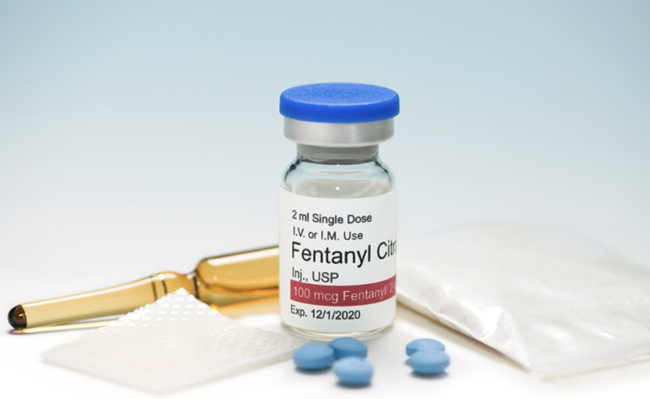The worst drug crisis in the history of the United States is caused by a surge in drug overdoses most frequently linked to fentanyl: a synthetic opioid that is around fifty percent more potent than heroin and one hundred times stronger than morphine.
Fentanyl’s perilous effects are becoming increasingly common. According to the Centers for Disease Control and Prevention (CDC), “over 150 people die every day from overdoses related to synthetic opioids like fentanyl.” Due to fentanyl’s lower production cost and high potency levels, there is an overall draw to the opiate as “less is more.” There are two types of fentanyl: pharmaceutical fentanyl and illegally made fentanyl. Most drug overdoses have been linked to illegally made fentanyl with the low prices and “heroin like effects.” Many illicit drugs are laced with fentanyl – yet people aren’t able to see it, taste it or smell it — making it a dangerous additive.
Similar to many other opioids such as morphine and heroin, fentanyl latches onto the body’s opioid receptors, which are located in the areas of the brain that monitor pain and emotions and are involved in sensory perception of vision, taste and olfaction. As a result of fentanyl addiction, the drug induces the brain to adapt to it, causing the mind to feel pleasure from nothing other than the opiate. Some effects of fentanyl include euphoria, pain relief and sedation, but also respiratory issues, confusion, drowsiness, dizziness, nausea and vomiting, urinary retention and pupillary constriction. Additionally, withdrawal symptoms from fentanyl include muscle and bone pain, sleep problems, diarrhea and vomiting, cold flashes with goosebumps, uncontrollable leg movements and severe cravings. These effects ultimately make withdrawal even more difficult, all this to say, it is imperative that action is taken on lowering addiction rates and finding accessible ways for people to seek out help.
The proliferation in fentanyl addiction is most associated with homelessness. Given the drug’s low price, it is easier for the homeless to access and continuously become users and eventually become addicted. However, the issue is that the homeless population are also disconnected from adequate health services and resources. This raises an important dilemma of how accessible healthcare is to people of different backgrounds. At Fieldston, the majority of students are receiving comprehensive healthcare, therefore, also having many alternative options for care and support in the event of drug addiction. Fentanyl proliferation has created a crisis that is crucial for politicians to find solutions. As wealth polarization is already an ongoing crisis today, the spike in fentanyl drug overdoses only exacerbates the issues that under-resourced people now face. Like Fieldston students, everyone should be granted access to suitable resources, but there needs to be an overall solution to providing robust healthcare given the enormous number of people affected by this drug crisis









